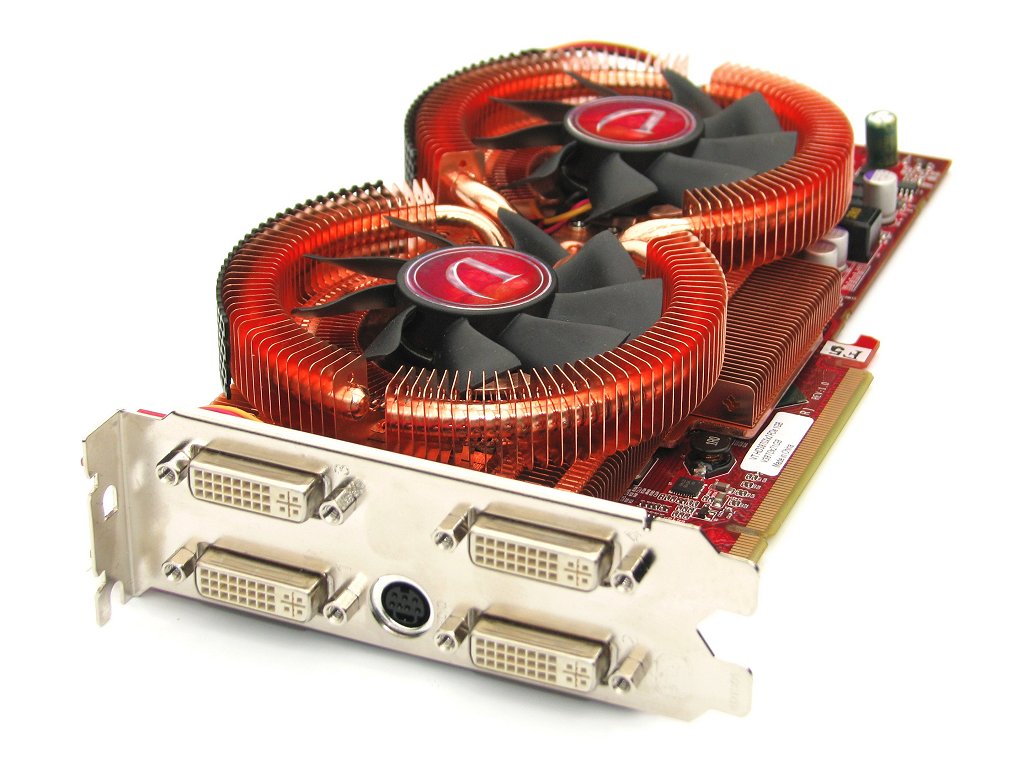The Card
There is one thing you may notice when looking for Radeon HD 3870 X2 cards online (or any videocard for that matter), particularly at major retailers. Very few will stray from the chip manufacturer's reference design.
Visiontek has now joined the elite few with their Radeon HD 3870 X2 graphics card, offering improvements to the cooling, quad DVI ports, along with slightly overclocked core and memory frequencies. The boards PCB design also looks to have been modified to accommodate for the custom cooling.



In terms of physical dimensions the ATI Radeon HD 3870 X2 is a beast. The standard specifications see it measure 26.5cm long, which is wider than a full ATX motherboard. These dimensions are very similar to that of a GeForce 8800 GTX, so we are not entering uncharted territory. However, the dimensions of the Visiontek 3870 X2 do not meet the standard ATI specifications measuring just 24.5cm long, making this the first card we have seen doing so.


The upgraded cooler looks much like the Thermaltake DuOrb, as it features two large copper orb coolers, each designed to individually cool a GPU. The memory chips located on the front side of the card are also cooled via a large aluminum plate which carries a large number of fins.
Interestingly there is no kind of cooling provided for the memory chips on the rear side. This was disappointing to find as these chips would often exceed 60 degrees when stress testing.


At the I/O end of the card you will notice a second PCB layer. This is where the two extra DVI ports reside, just as there would be with a Crossfire setup. Those seeking for serious connectivity for LCD monitors will no doubt be very interested in this feature, as two cards will support eight DVI ports.




The ATI Radeon HD 3870 X2 comes standard with 1GB of memory (512MB assigned to each GPU). The default operating specification for this memory is 1800MHz, though Visiontek has increased the frequency to 1920MHz in this overclocked edition. Furthermore, each GPU has been designed to work at 825MHz, while Visiontek has overclocked them to 840MHz. This is a mere 2% overclock per GPU, so it should be safe to assume that they were hitting limitations inherent to the complexity of the board design.

On the upside, Visiontek is using 1GB GDDR3 memory from Samsung "K4J52324QE-BJ1A" which does overclock rather well. We were able to reach 2113MHz with these modules before stability became a problem. The cores on the other hand were limited to 863MHz, which is only 23MHz higher than the already slightly overclocked speeds.
